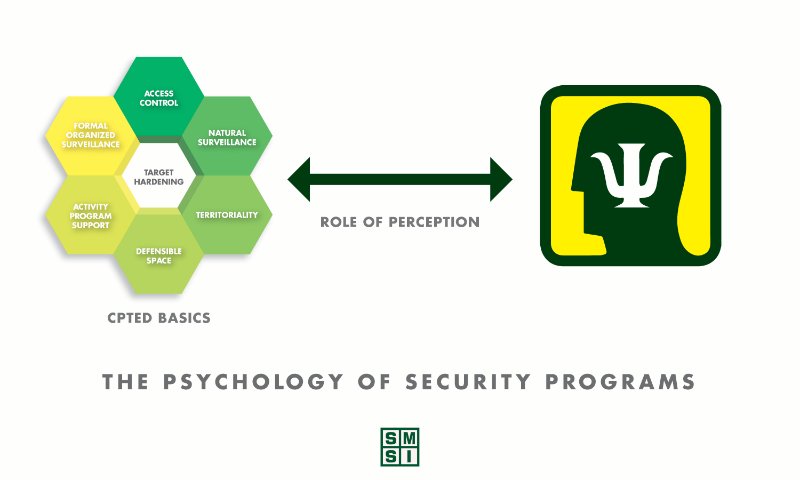THE POWER OF CPTED IS THE GLUE THAT HOLDS SECURITY PROGRAMS TOGETHER

As posted on LinkedIn Pulse 10/6/16
This is the justification as to why CPTED should be the Backbone of Any Security Plan.
CPTED (Crime Prevention Through Environmental Design) should be an integral component of every security program. CPTED is an appropriate crime prevention strategy for almost every component of security design. CPTED is applicable to schools/ universities and houses of worship. CPTED is relevant for high-rise building, sports and entertainment venues and even residential communities. CPTED is appropriate to manufacturing enterprises, the biotech industry and healthcare facilities, such as hospitals. CPTED is a great fit for shopping malls, industrial parks and office parks.
The bottom-line, CPTED is strategic adjunct to any security program as a reasonable strategy to deter both the internal and external threat of criminality. To put it another way, the lack of CPTED will likely render, otherwise effective security programs as marginalized, especially those industries that regularly afford public access. CPTED, when properly applied, may potentially will likely be a counter against premises liability claims.
CPTED has been steadily on the rise for the last 30 years or so. CPTED affects human behavior by affecting perceptions. The goal CPTED is to discourage negative behavior, while encouraging positive behavior. This methodology is applicable to both internal and external environments. Internal criminality has been the downfall of many categories of business enterprises. External criminality can affect public perceptions, which may result in business failures and losses affecting reputation, including premises liability lawsuits. CPTED has the capacity to positive behavior motivator, while at the same time, discouraging negative behavior. The image below graphically depicts that perceptions are a relevant factor when perceptions regarding the efficacy of security programs are made.

The application of CPTED principals as an element of any security strategy, is likely to ensure that the whole will be greater than the sum of the parts. This supports the notion that CPTED should become the foundational basis from which any holistic security program rises.
Each of the six CPTED methodologies displayed here, also afford a number of options for implementation, depending of the value of the potential target(s) and the ambient threat environment. Consideration regarding the level of target hardening is a function of probability and criticality. For example, not every facility needs to be driven by a fortress mentality. This is why the ambient threat environment must be quantified. Once the level of threat has been quantified, one can then make decisions regarding the level of needed security redundancy.
For example, in order to establish territoriality at the property line, number various options may be considered.including: Chain-link fencing topped with razor ribbon or alternatively, defining the property line with a well-groomed hedge. Security needs will also dictate the level of required redundancy. Data to be considered may include the CAP Index data and/or Police Reports.
To reiterate, CPTED acknowledges the power of perception, both positive and negative. When residents and/or employees have a sense of psychological ownership of a property, CPTED design becomes even more effective.
CPTED if properly applied, is almost always cost-efficient by offering an opportunity for improved security at a lower cost.
However, CPTED will not always negate the need for costlier security methodologies such as security officers, video surveillance systems and access control, but CPTED will render these alternatives more impactful.. CPTED potentially may reduce required levels of more traditional methodologies, especially when combined with participatory security awareness programs, very much following the model of employee safety programs.
An often under-used security strategy is the participation of Involved and trained rank and file employees. This approach may actually be more effective than some of the costlier traditional security models, without sacrificing a reasonable standard of care.
All of these potential benefits also reinforce the notion that periodic security assessments are in order, as opposed to waiting for the wheels to fall off.
If you accept the notion that the role of most security programs is to deter criminal behavior, that security program must be perceived as being effective. CPTED will go a long way to achieving that objective. CPTED strategies are equally applicable to both interior and exterior space.
CPTED strategies may be applied at any time. Clearly the optimal opportunity is during new construction and project planning, However CPTED strategies are regularly applied to the built environment. CPTED strategies can also be successfully applied to almost any industry. CPTED strategies are also appropriate for those industries that are mandated for target hardening such as banks and critical infrastructure , such as nuclear power plants.
For those who are not presently applying CPTED principals, the best first step in the process should be to engage in a comprehensive security assessment in order to establish a baseline from which to build to build your security program going forward.
Finally, CPTED does not occur in a vacuum. One cannot simply deploy CPTED strategies, and then wait for good results. The application of CPTED strategies requires participation and nurturing. The facilitation of natural surveillance is moot is employees are not educated how to be vigilant, including the ability to recognize and articulate suspicious behavior. I have often rhetorically asked many of my clients, which is better, 20 cameras or 200 hundred sets if eyes and ears? This is where Security Awareness training will pay dividends.
Much of today’s modern architecture is characterized by the generous use of glass (numerous natural surveillance opportunities). When suspicious behavior is observed in the parking lot, and a security officers is dispatched to investigate, one of two these will happen: Either good customer service will be served or the bad guys will look for easier pickings.
When CPTED is coupled with a modest amount of security awareness training, effective and cost efficient security is the beneficiary. As mentioned , CPTED is a particularly beneficial strategy for those enterprises that afford some degree of public access (Hospitals & Clinics, Schools and Universities, Shopping Malls, Office Building, residential Complexes and Entertainment & Sports Venues).
Within this list, hospitals are generally held to the highest standard of care. It is a fair assumption that every category of crime that occurs in the surrounding community, will likely find its way to the local hospital and shopping malls.
As each business category consider the ideas herein, remember that the development of a comprehensive security program, should begin with CPTED, and subsequently be reinforced, as needed, with the more traditional approaches as access control, video surveillance and security officers, if needed.

William H. Nesbiit, CPP, Certified CPTED Practitioner
President of Security Management Services International, Inc. www.smsiinc.com , bill@smsiinc.com; Phone:805-499-3800
